|
|
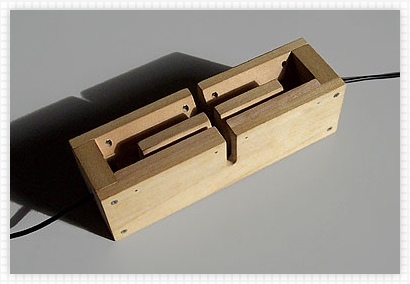
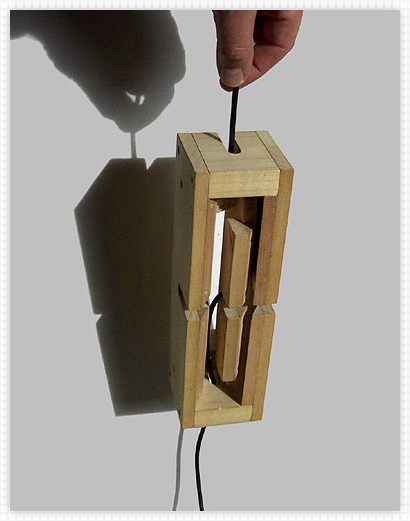
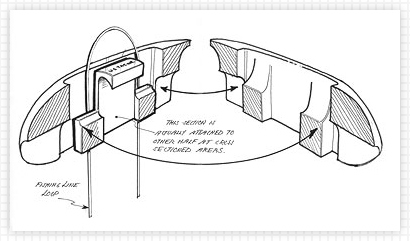
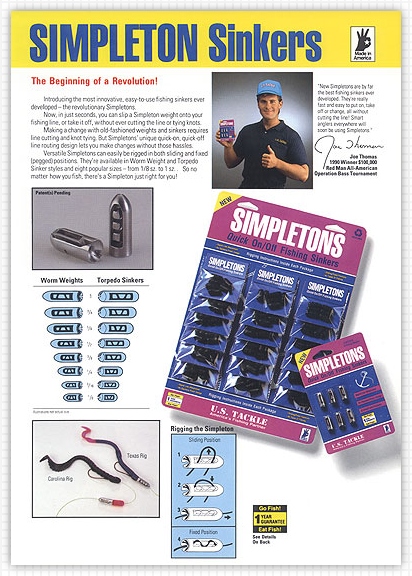
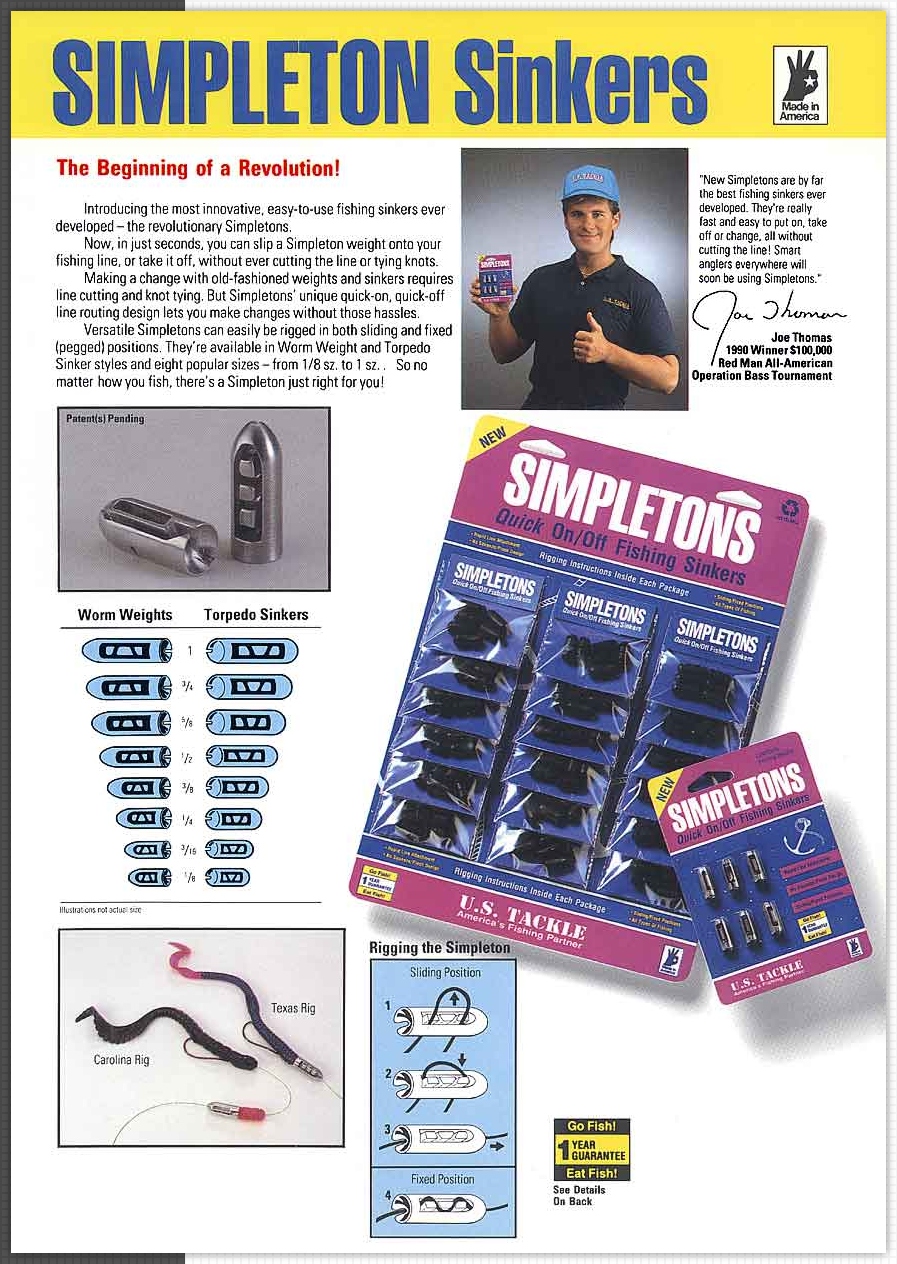
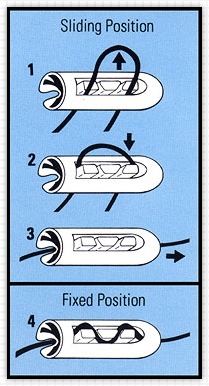
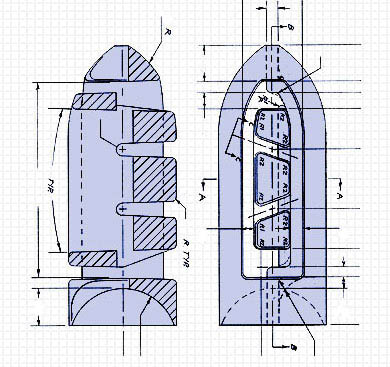
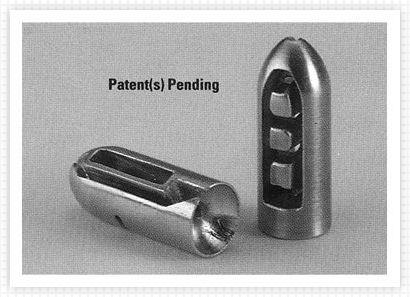
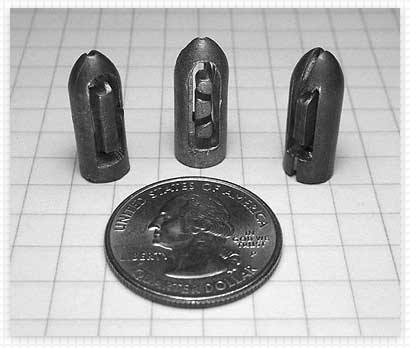
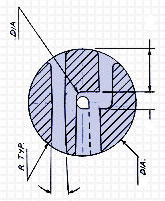

Simpleton - Quick On and Off Fishing Sinkers |
Product Description: The Simpleton Fishing Weight’s unique quick-on, quick-off line routing design lets you make changes without ever cutting the line or tying knots. Unlike old-fashioned weights and sinkers, they can be rigged in both sliding and fixed (pegged) positions. Simpletons are available in eight popular sizes and Worm Weight and Torpedo Sinker styles. Contracted by "Great American Royalty Group" and, U.S. Tackle, a Cincinnati based start-up. U.S. Tackle, Milford OH. 1992. Design Objectives: Devise a fishing sinker (weight) that can be attached to a fishing line between a fishing rod and the lure and hook. *The weight must be attached quickly, without tools, cutting the line, or tying knots. *The sinker weight should, at the option of the user, be able to either slide freely along the line or be fixed to the line. *The device should be attached to the line in such a way that it cannot become detached unintentionally. *Its shape should prevent snagging on rocks or other obstacles. *The weight is to be molded from metal or other dense materials in a variety of sizes and weights. The Solution: The design approach chosen was to develop a weight that combined the advantages of the two basic types of commercially available weights into one design. The resulting invention provided an improved alternative to both types of weights, the "Slip Shot", and "Split Shot". The "Slip Shot" type requires the co-axial threading of a cut line through the weight's inside diameter, can not be removed from the line without cutting, and requires the user to jam a toothpick into one end to accomplish the fixed (pegged) relationship. The "Split Shot" weight requires the user to place the weight onto the line and carefully crimp the device onto the line with pliers. The degree to which it is crimped determines it's fixed or sliding relationship to the line. A common problem with the Split Shot weight is that the portion that is bent to install and later remove the weight from the line becomes fatigued with repeated use and breaks. Many times the broken weight falls from the line and into the water where it can over time contaminate the water and be ingested by water fowl. The weight which is made from lead is an environmental concern as well as an inconvenience for the fisherman. A number of concepts were considered before deciding to concentrate on designs that involved forming a "U" in the line and inserting it into some variation of longitudinal slot along the sinker. Solving the problem in abstract form: As is the case with any design challenges that are difficult to visualize because of their complexity or miniature size, I constructed an abstract, re-configurable model to experiment with various line routing configurations. This is an approach I have found effective many times to simplify visualization and creative thinking. By extracting the extraneous details and cosmetic appearance from the equation, a problem is distilled down to its simplest form. Though the model and related sketches bore little resemblance to the cylindrical bullet's size or shape that I knew would be required, it proved indispensable in visualizing the most difficult design problem; i.e. attaching an object co-axially to a flexible line without cutting the line and threading it through, or crimping it with pliers. The wooden model seen here in the photo anticipated the physical limitations of any molded design taking into consideration the extraction of the part from the tool cavity. Using ordinary electrical cord to simulate the fishing line routing, I discovered several procedures that allowed the line to slide freely in one configuration or be fixed in another. With the line routing problem solved, the design approach was converted back to actual scale, drawn up, and masters were machined from aluminum to form silicone rubber molds. Prototypes were cast in lead in a variety of sizes and weights. The client was successful in obtaining a U.S Utility Patent. |
Quick On and Off Fishing Sinkers |
An abstract, re-configurable model was constructed to experiment with various line routing configurations. |
Using ordinary electrical cord to simulate the fishing line, several line routing configurations were discovered that allowed the line to slide freely using one routing method or be fixed in another. |
Sectional drawing shows one of several line routing options. |
U.S. Tackle brochure. See enlarged image below. |
The brochure and patent show the various embodiments of the invention and alternative materials. |
Prototypes were cast in lead, in a variety of sizes and weights. Three design variations are shown here. |
"By extracting the extraneous details and cosmetic appearance from the equation, a problem is distilled down to its simplest form". |
© Copyright 2005-2008 Fore-thought Designs™ All Rights Reserved. |
"Problems and their solutions become most visible when viewed abstractly". - Devon S. McTibet |
"Sponges grow in the ocean. That just kills me. I wonder how much deeper the ocean would be if that didn't happen". - Steven Wright |
U.S Patent |
Click on picture to view U.S. Patent. |
INVENTIONS FOR LICENSE |
Invest in solutions. |